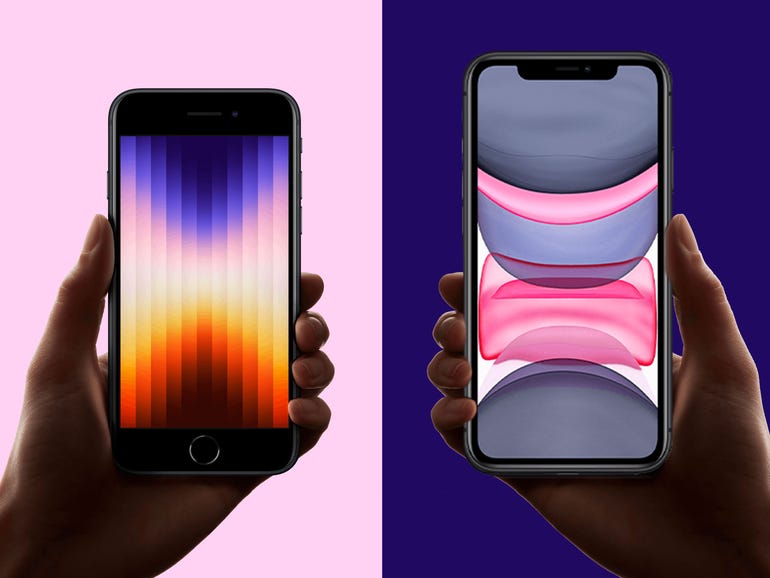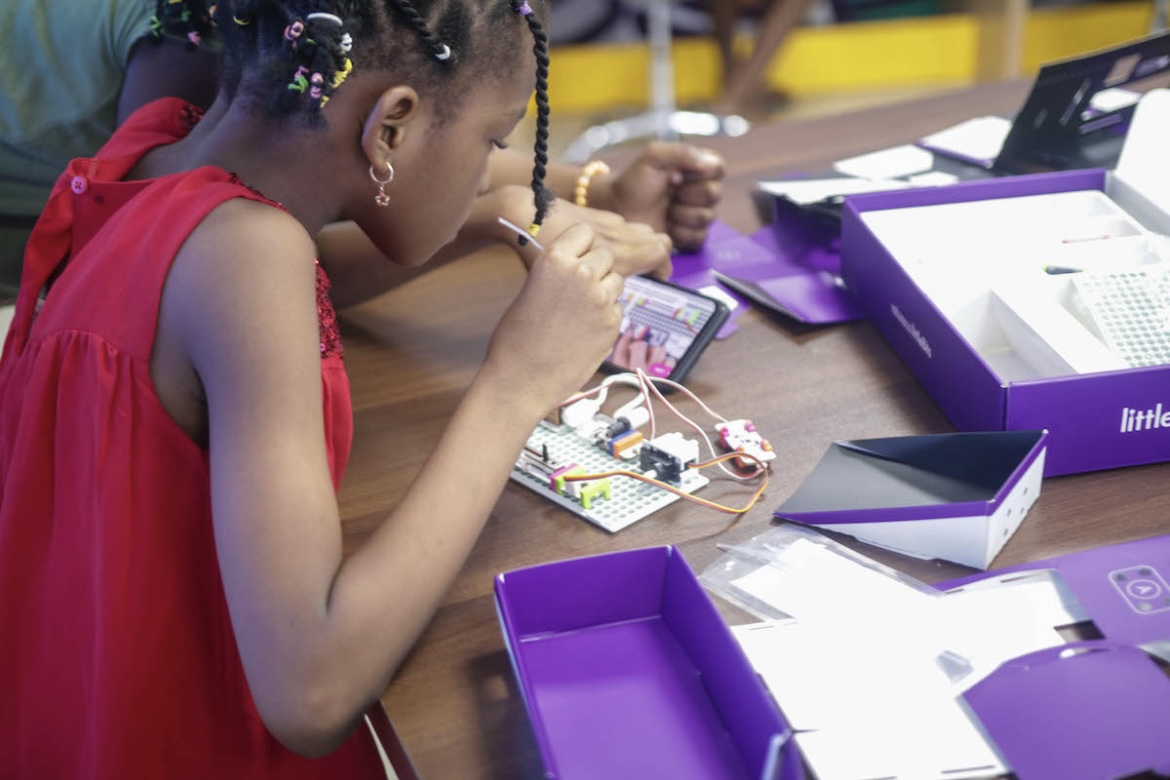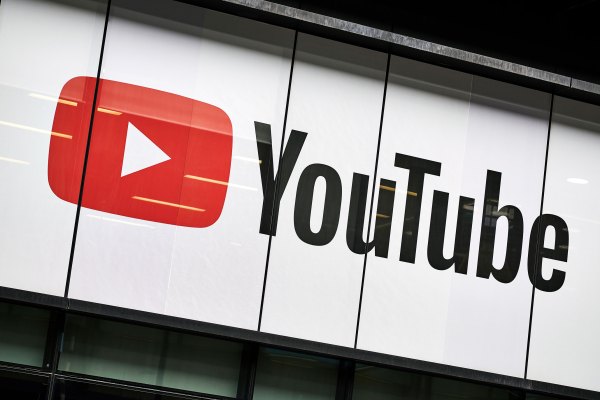iPhone SE (2022) vs. iPhone 11: Mid-range iPhone showdown
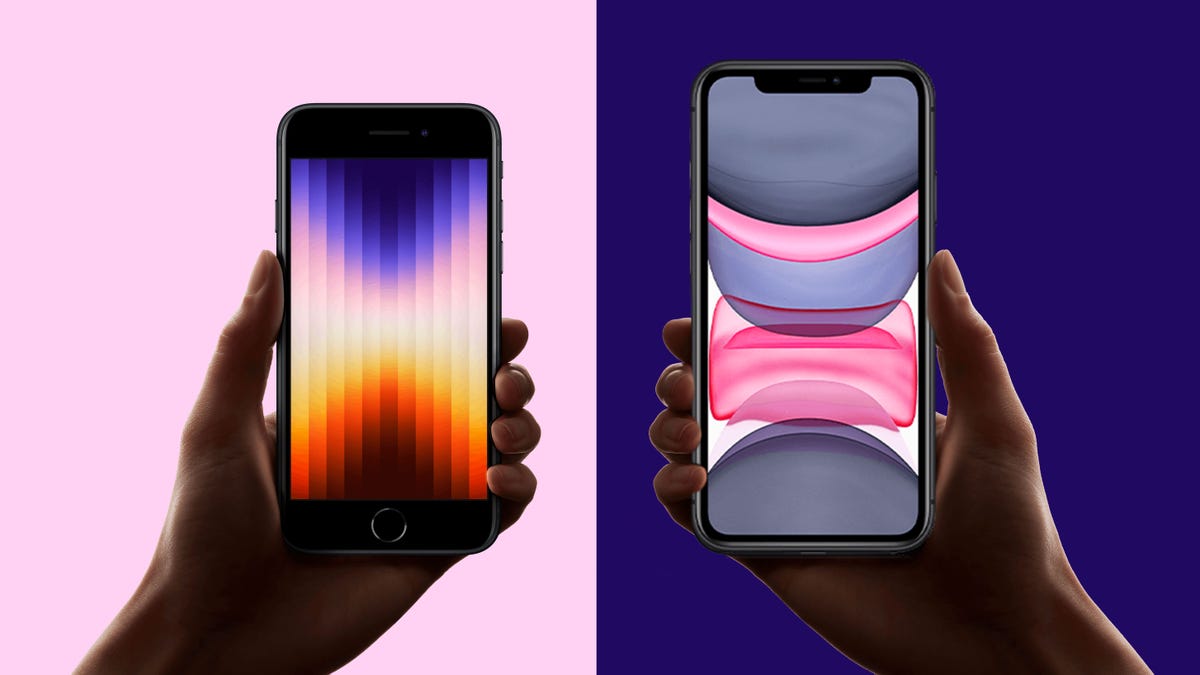
The new iPhone SE is here and has once again stolen the spotlight for potential iPhone adopters on a budget. Starting at $429, the 5G-enabled, A15 Bionic-powered handset is the most affordable iPhone that Apple offers. But priced just $70 more is the older, but larger, iPhone 11 — also available for purchase via the Apple store.
Whether you’re eyeing a new iPhone for a family member, significant other, or yourself, there’s no question that both the iPhone SE and iPhone 11 deliver exceptionally good value mobile experiences. To help you best decide which of the two sub-$500 smartphones you should spend your hard-earned money on, we’ve compared the design, performance, cameras, and overall value of both below.
Design
|
iPhone SE (2022) |
iPhone 11 |
|
|
Display |
4.7-inch Retina HD |
6.1-inch Liquid Retina HD |
|
Weight |
144 grams |
194 grams |
|
Biometrics |
TouchID (fingerprint unlock) |
FaceID (face unlock) |
|
Colors |
Midnight, Starlight, Product Red |
Purple, Yellow, Green, Black, White, Product Red |
|
Camera |
Single 12-megapixel camera |
Dual 12-megapixel cameras |
|
IP rating |
IP67 (one meter deep for 30 minutes) |
IP68 (two meters deep for 30 minutes) |
One of the major crossroads that you’ll encounter when deciding between the iPhone SE (2022) and iPhone 11 is design. While the former was released in early 2022, its hardware is practically indistinguishable from the iPhone SE (2020), which shared the same design as the iPhone 8 of 2017. That’s not to say that this year’s iteration falls short in the performance side of things. Just don’t expect the near-bezeless figure that modern day iPhones have embraced and, instead, look forward to the nostalgia that is 4.7-inch iPhones with physical home buttons.
Likewise, the iPhone 11 offers a recycled design of its predecessor, the iPhone XR. (Apple clearly likes to recycle things.) But unlike the SE, the iPhone 11 has a much more screen-dominant appearance, with a notch at the center for FaceID (face unlock) instead of the old and reliable fingerprint sensor. It’s also significantly larger than the SE, with a 6.1-inch Liquid Retina display. For entertainment lovers who desire the best viewing experience, the larger iPhone may be of greater use than the SE.
More: Best iPhones in 2022
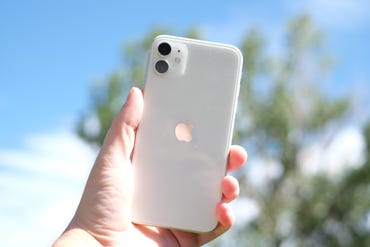
The iPhone 11 in White.
Jason Cipriani/ZDNet
Both iPhones are equipped with a 12-megapixel wide camera at the back, but the 11 takes it a step further by tossing in a 12MP ultra wide lens for those head-turning landscape shots. How the two perform in actuality will be broken down in the camera section later on.
The iPhone SE sports an IP67 rating, which certifies it as water resistant of up to one meter deep for 30 minutes. Comparably, the iPhone 11 has an IP68 rating, protecting it from a swim of up to two meters deep for the same time. In the grand scheme of things, both devices should hold up in the rain or shine.
In terms of color options, the iPhone SE comes in Midnight (black), Starlight (white), and Product Red. The iPhone 11 can be purchased in Purple, Yellow, Green, Black, White, and Product Red, though availability will vary, given it’s a three-year-old device.
Putting the iPhones side by side, design alone may be enough to sway you to one side. For a more modern feel and finish, the iPhone 11 is the phone of choice. But if you long for the familiar, compact, and reliable iPhone 8 design, then the SE will do you no wrong.
Performance
|
iPhone SE (2022) |
iPhone 11 |
|
|
Processor |
A15 Bionic (6-core) |
A13 Bionic (6-core) |
|
RAM |
4GB |
4GB |
|
Storage |
64GB, 128GB, 256GB |
64GB, 128GB |
|
Connectivity |
5G (sub-6 Ghz) |
4G LTE |
|
Battery |
Up to 15 hours video playback |
Up to 17 hours video playback |
For how much smaller and cheaper it is, the iPhone SE packs enough firepower to rival that of Apple’s flagships. That’s largely due to the A15 Bionic chip — the same processor found in the iPhone 13 Pro — under the hood. When ZDNet’s Jason Cirpriani benchmarked the iPhone SE, it scored 1,731 and 4,316 on the single and multi-core tests respectively, doubling that of Google’s highest-end
Pixel 6 Pro
. From a real world perspective, that basically means the iPhone SE can run apps, games, and multitask with little to no stutter.
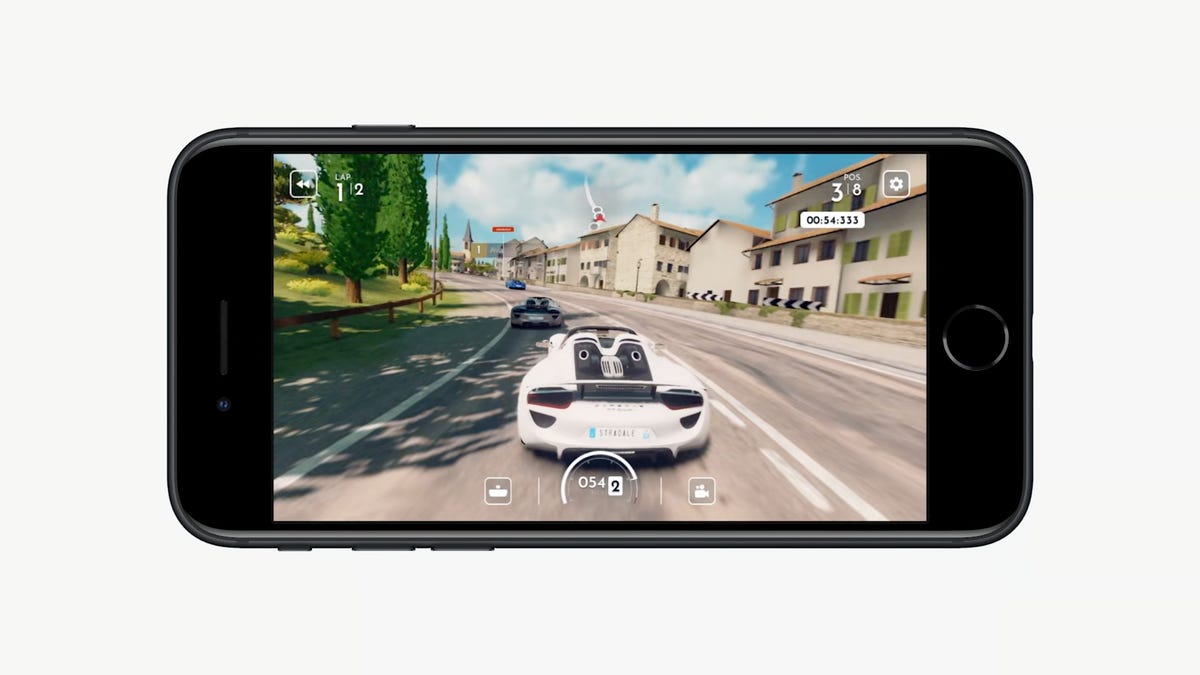
iPhone SE (2022) brings the physical home button back.
Image: Apple
Still, the iPhone 11 treads closely behind, with its A13 Bionic processor being just as reliable for social media browsing, movie streaming, and capturing 4K video. The older iPhone is also equipped with 4GB of RAM, and by operating on the same versions of iOS, all the software perks of one iPhone are ever so present on the other. It is worth noting, however, that Apple typically honors between five to seven year software updates. Given the three year gap between the 11 and new SE, you can expect the latter to receive longer support if purchased today.
To 5G or not to 5G? That is another question you’ll have to answer when deciding between the two iPhones. To simplify the process, the new iPhone SE only supports sub-6 Ghz, not the considerably faster mmWave 5G. So not only is the difference in networking speed less noticeable, but you’ll have to opt into a 5G data plan with your carrier of choice in order to take full advantage of the fifth-gen technology.
Both iPhones start at 64GB storage sizes, upgradeable to 128GB for an extra $50. The iPhone SE takes it a step further by offering a 256GB variant for those who seek the extra space. In an ideal world, 128GB would be the base configuration of all iPhones, but if you’re tight on budget, there are plenty of free, high-quality cloud services worth considering.
Apple claims that the new iPhone SE can provide an additional two hours of use compared to its predecessor. From our testing and full review, the SE got “over 3 hours of screen-on time during a typical day,” before needing a charge. As ZDNet’s Jason Cipriani points out, “If you consider yourself a power user, you’ll likely find the iPhone SE’s battery life lacking.”
The same cannot be said about the iPhone 11, which garnered close to five hours of screen-on time when we first tested the device. While Apple remains secretive about battery capacities, it wouldn’t come as a surprise to find a larger size housed in the iPhone 11 than the SE. The 11 is the clear winner if battery life and endurance is one of your main priorities.
Camera
For casual and professional use, both the iPhone SE and iPhone 11 do an exceptional job at capturing photos and videos, in the day or night. The same 12MP wide lens can be found on the backside of the two devices, and allows for 4K video recording, optical image stabilization, and all of Apple’s computational chaps — including Deep Fusion, Smart HDR, and Night Mode.
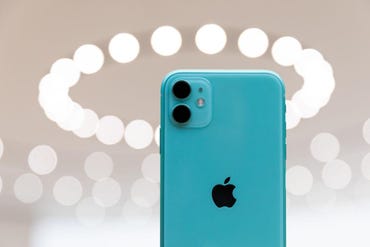
James Martin/CNET
The biggest difference comes in the form of the iPhone 11’s 12MP ultra wide lens. With a 120-degree field of view, the iPhone 11 can capture a wider range of subjects and provide more context than the default camera. The ultra wide lens also allows for macro photography — or close-up shots — thanks to the smaller focal length. In general, the iPhone 11 offers more flexibility with your picture and video-taking.
On the camera front (literally), the iPhone SE houses a 7MP FaceTime camera for selfies and 1080p video, but nothing more. The front-facing camera does not support FaceID and, therefore, cannot be used to create Animojis, Memojis, and other facial-driven features. Like many of its other hardware limitations, this is mainly because the SE uses the older iPhone 8 design.
Relatively speaking, the iPhone 11 fields a 12MP TrueDepth camera for sharper video recording of up to 4K, FaceID, and the same picture capabilities as the SE. It also supports Apple’s slow-motion selfies, or “slofies,” for what that’s worth.
More: iOS 15.4 lets you use FaceID with a mask
In general, you can’t go wrong with either camera systems, but if you spend a good amount of time capturing pictures and video with your smartphone, the iPhone 11 may be the better of the two. Not only does it give you more flexibility with your shots, but has a longer lasting battery to keep the camera rolling.
Price
While the iPhone 11 debuted with a $699 price tag, the phone has since dropped to
just $499
on the Apple store. That puts it within arms reach of the newly-released iPhone SE, which
starts at $429
.
The iPhone 11 is the better buy if you desire a large-sceen phone, reliable battery life, an uncompromising camera system, and can do without 5G. The iPhone SE gets our recommendation for users in search of a compact smartphone that doesn’t hold back in performance and speed. It’s also a future-proofed investment that should fare well five or six years down the road.
Alternatives
If you’re open to other smartphone prospects, consider these ZDNet-tested offerings:

